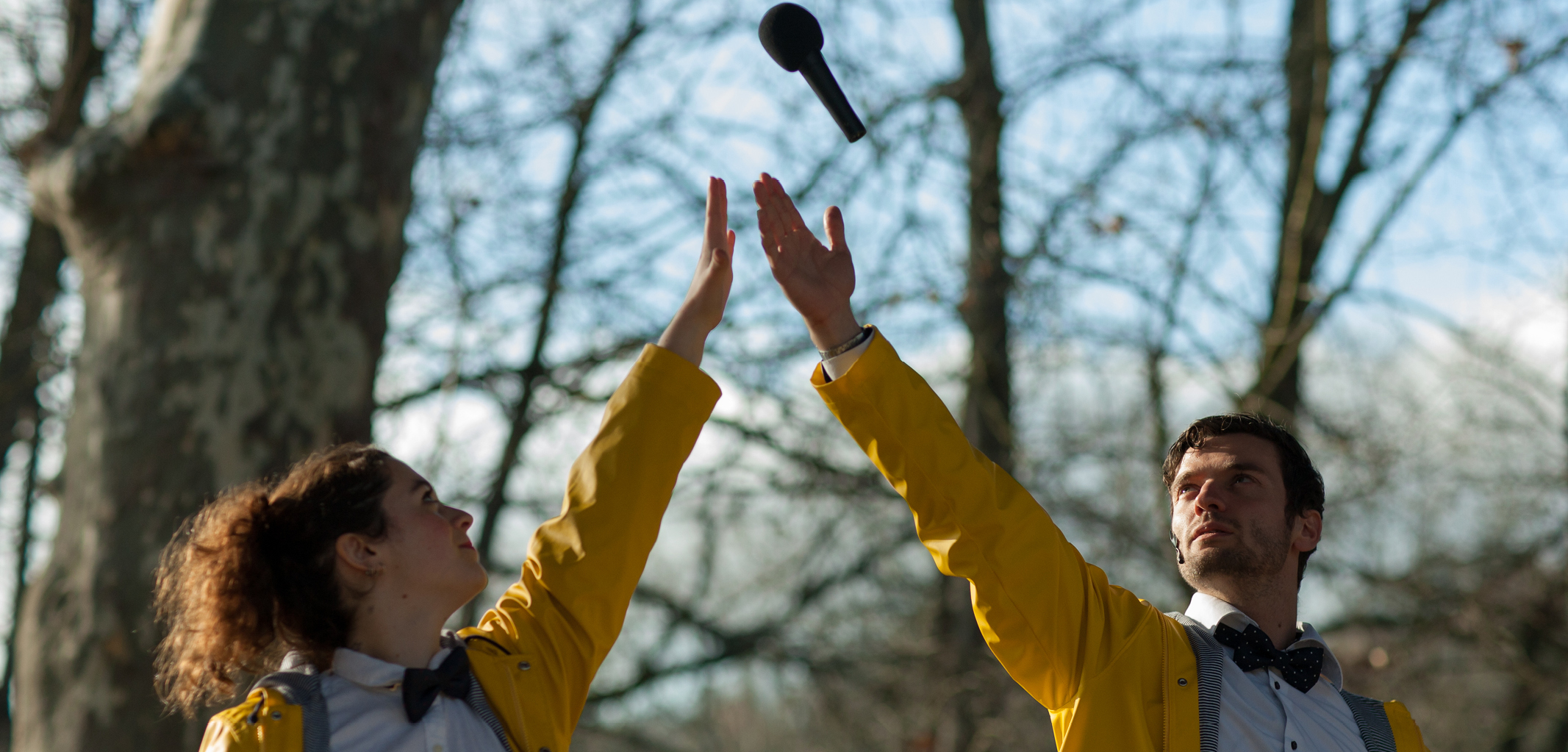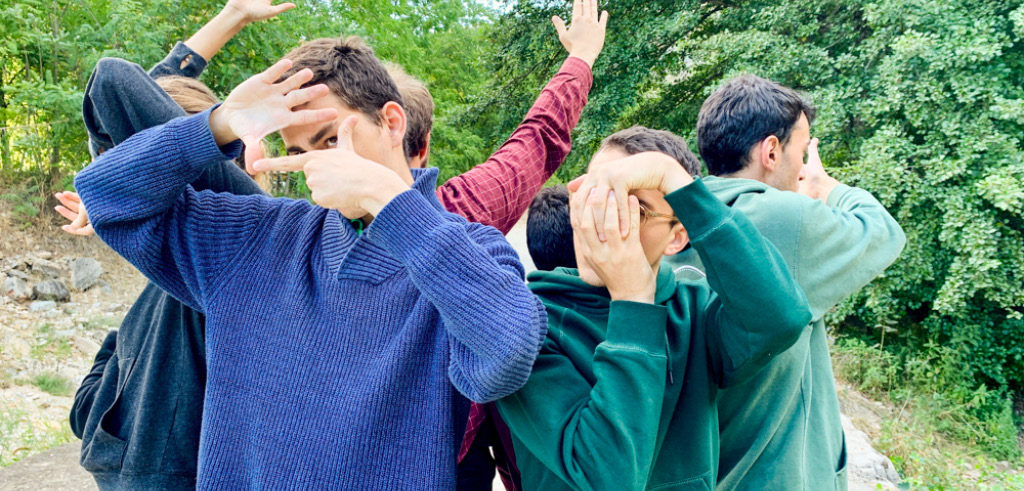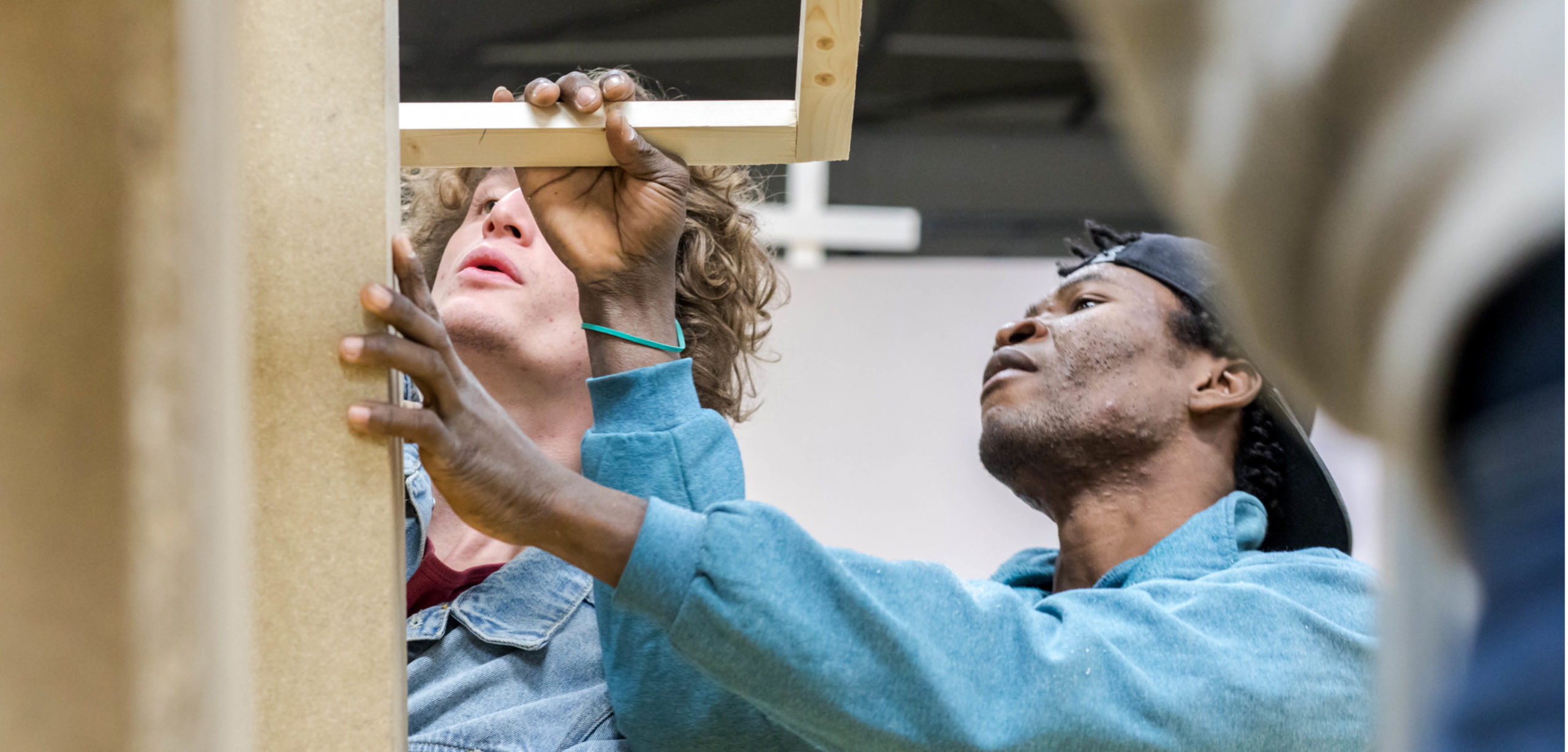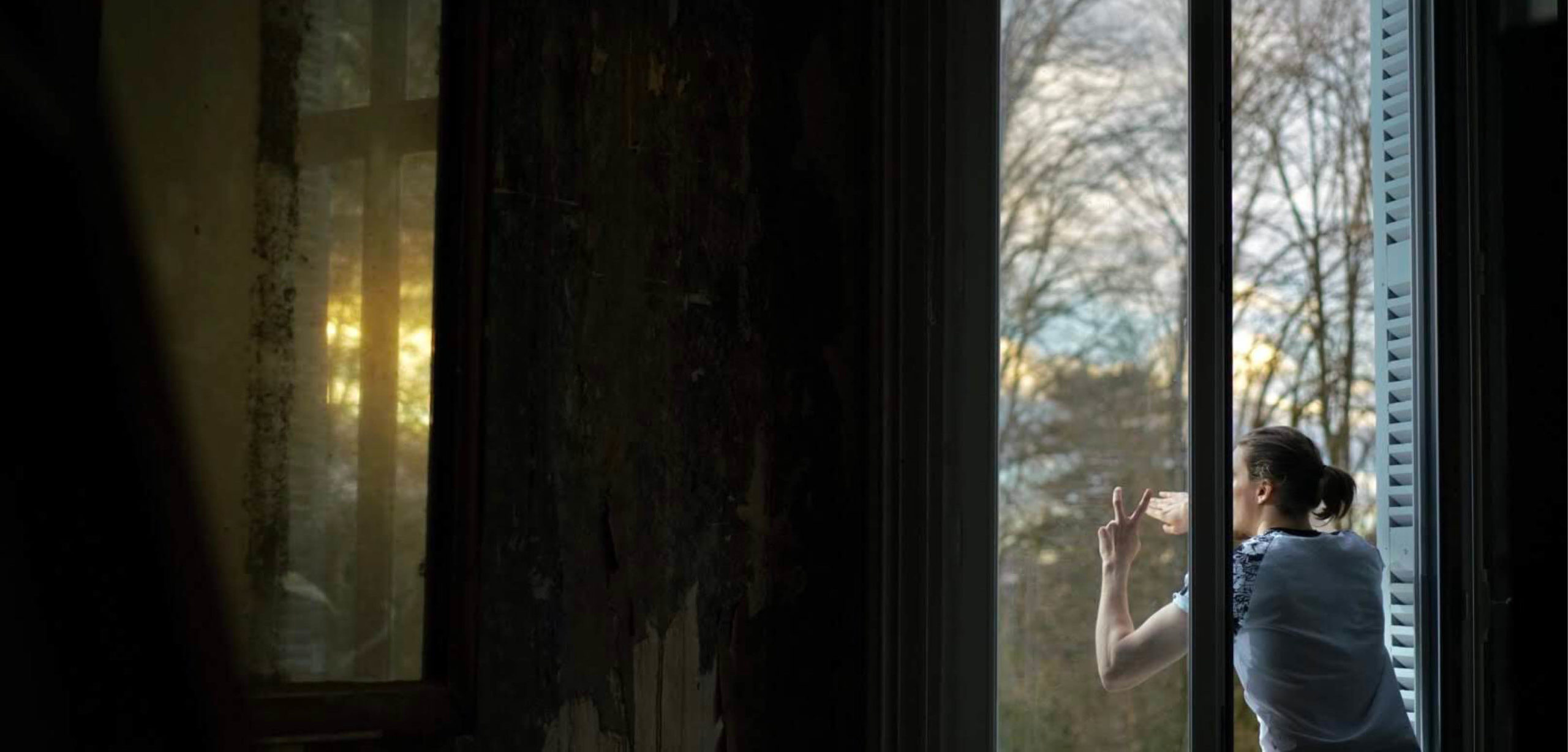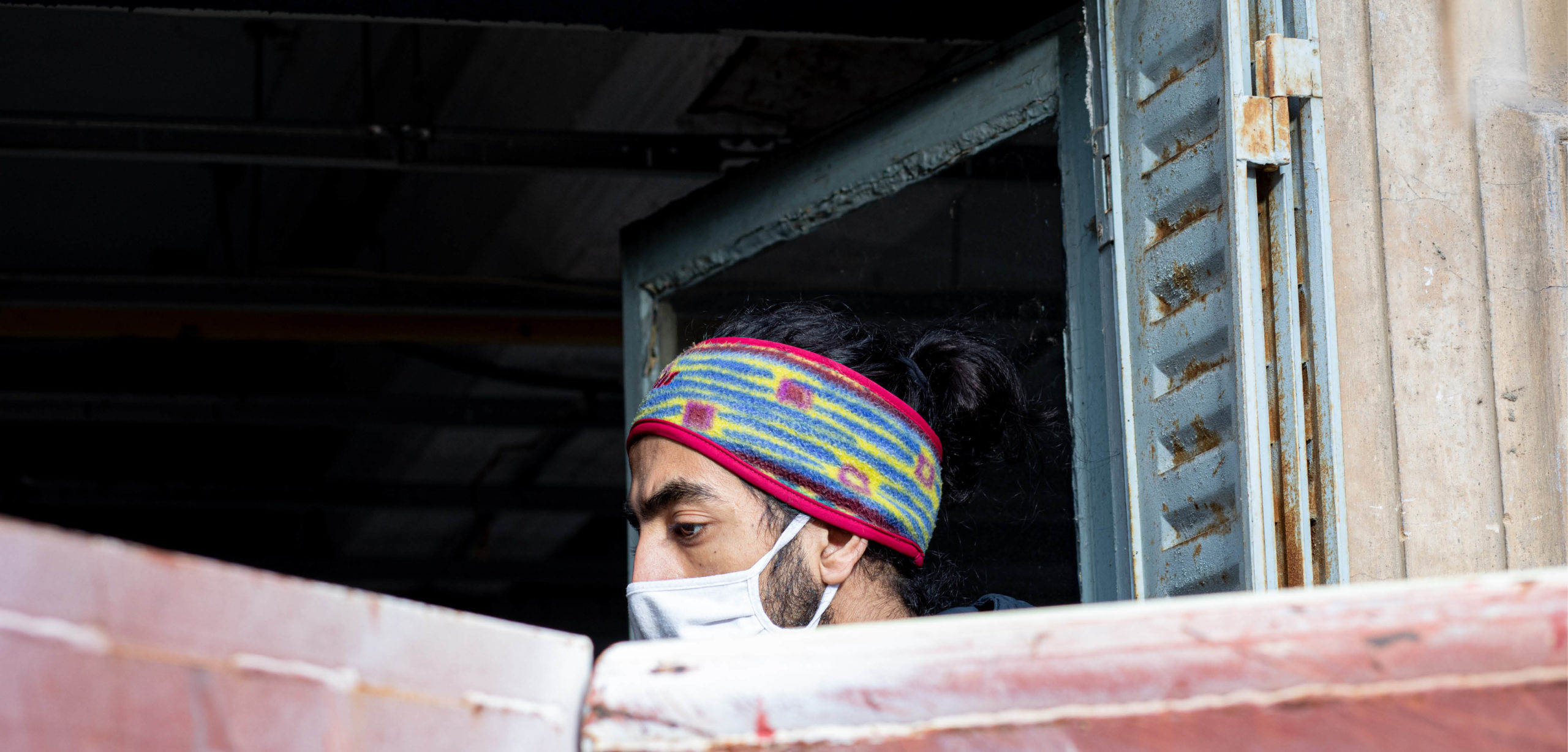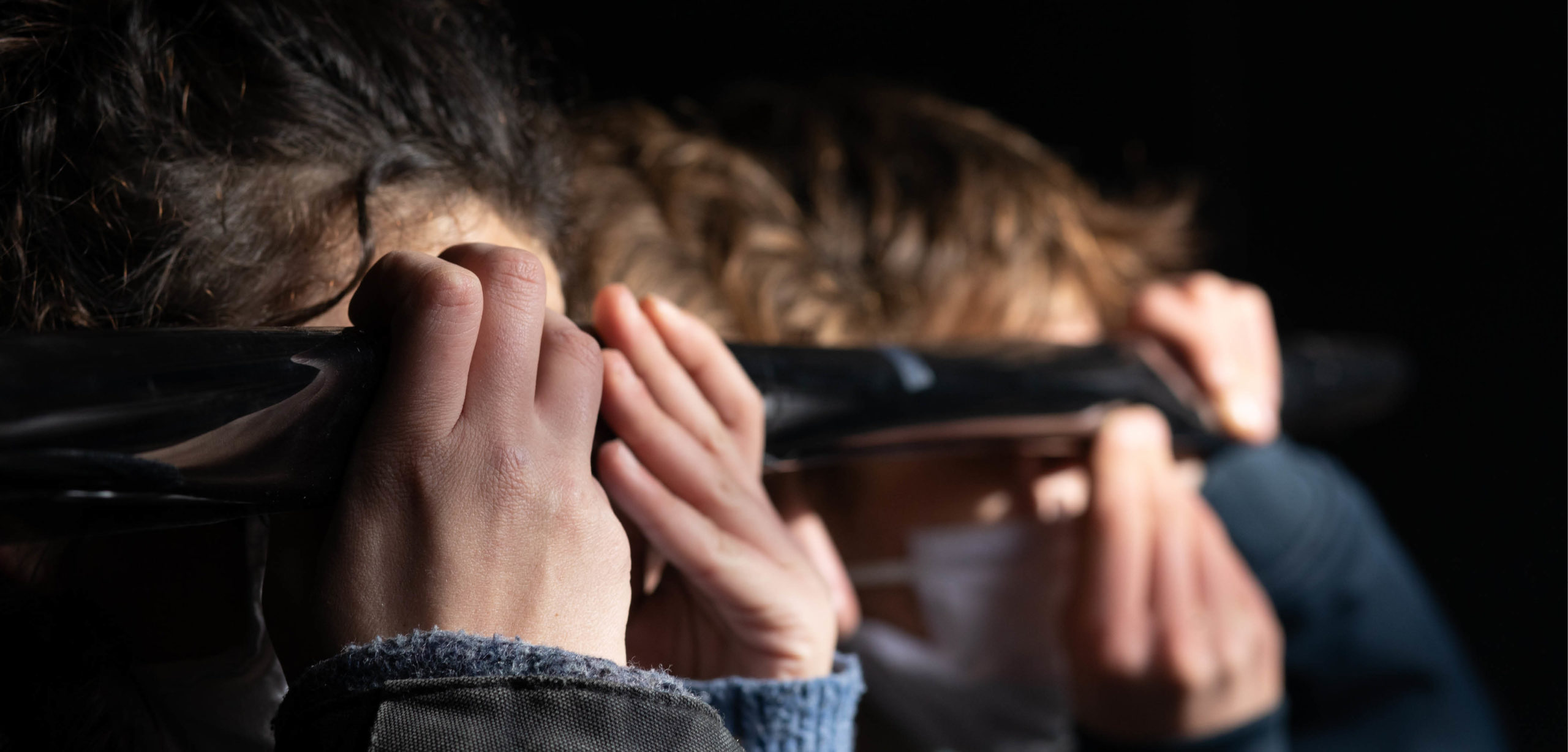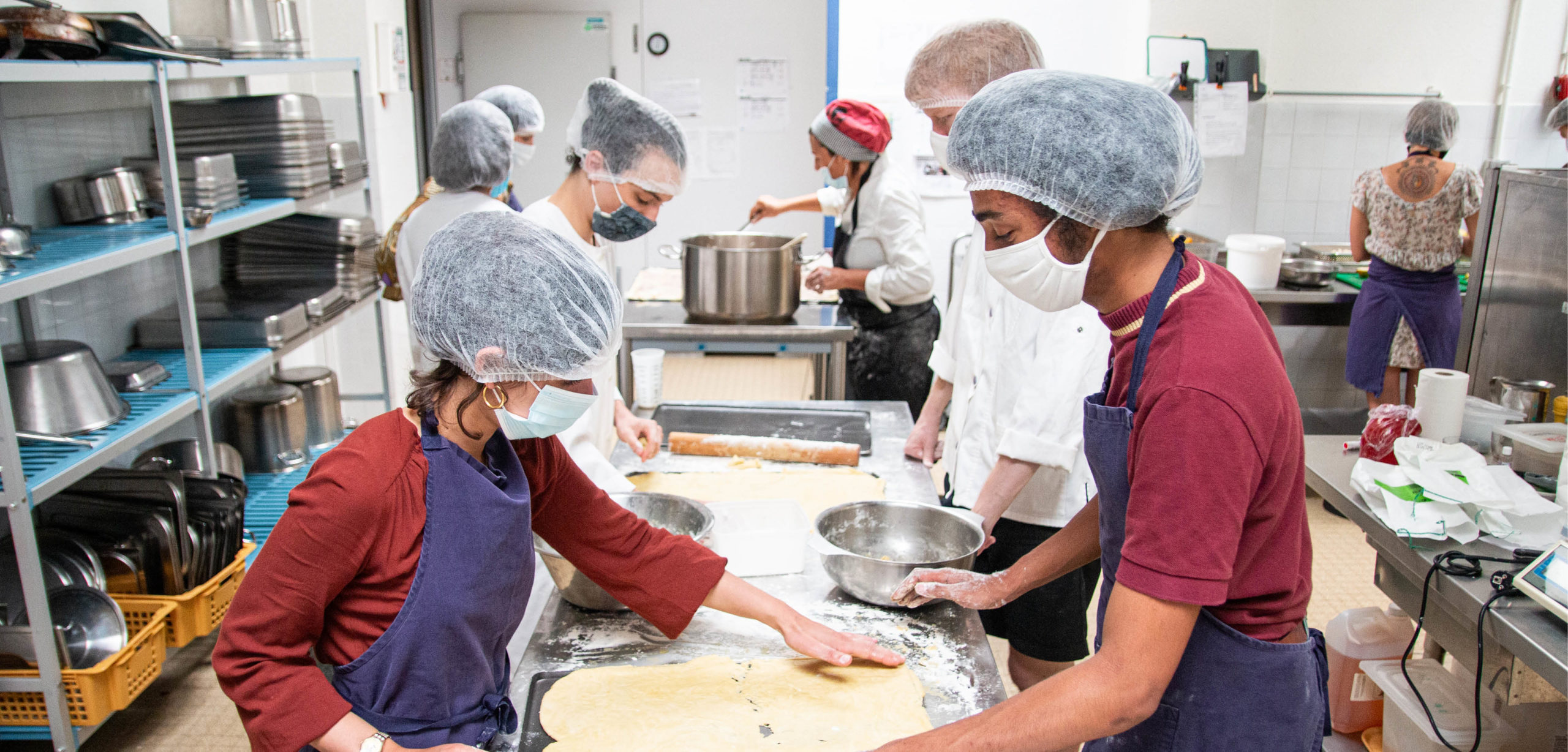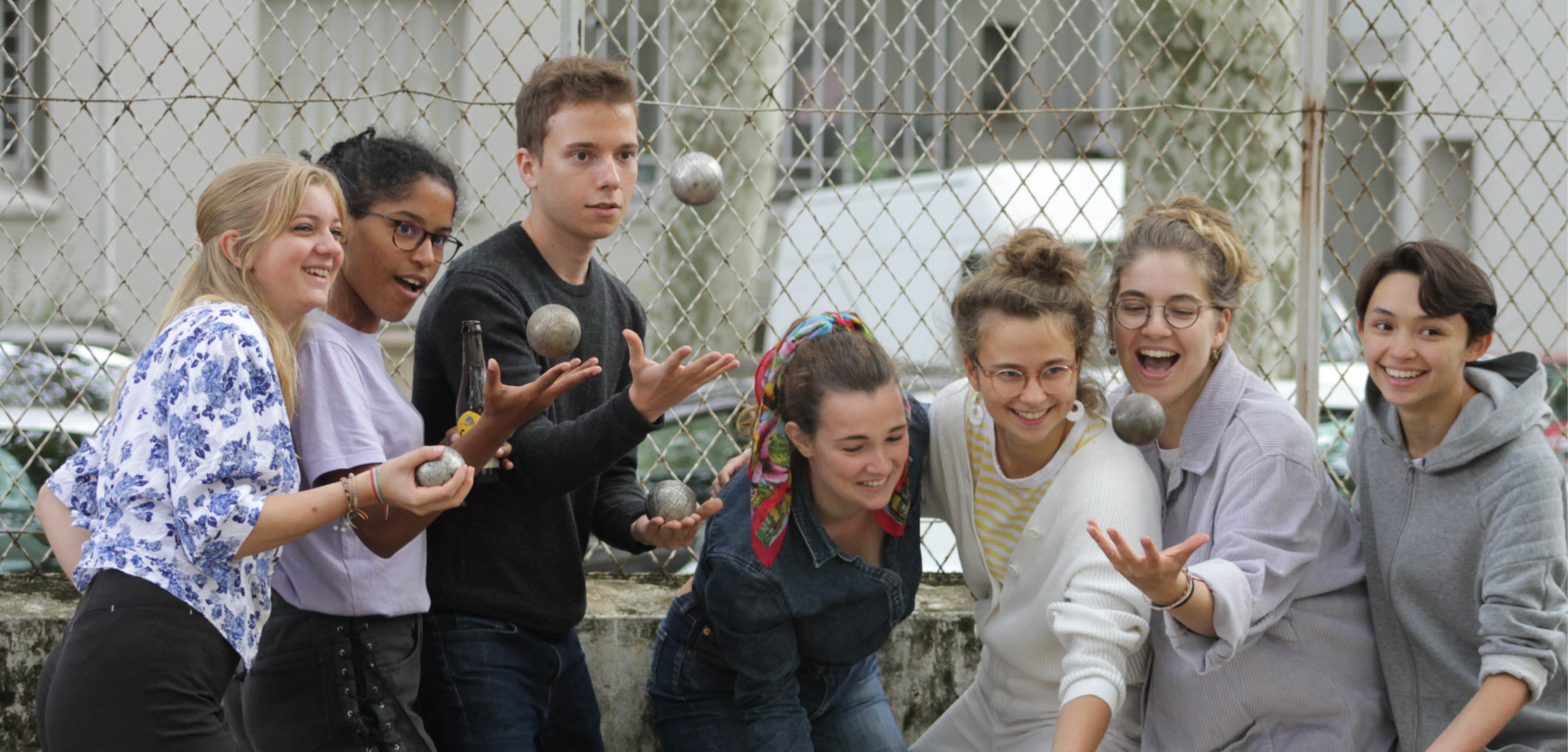
If you enter the CinéFabrique on a Friday at 2 p.m, you will see more brooms than cameras; in this niche, we are all cleaning up. And if you go behind the building at 8 a.m, you will have the chance to see technicians in charlotte with vegetable peels; it is the moment when they peel organic vegetables that we will eat at noon.
The premises of the CinéFabrique are those of a former vocational school, refurbished to make it a little easier to practice cinema. Like the training it offers, the CinéFabrique, which is still under construction, is adapting day after day to its new occupants; because they are the ones who shape it. There is no doubt that the money injected was used for studio sets or editing boxes rather than a facelift. However, parquet floors do not shy away from Dolly’s tests, the proven windows stand up to blundering assaults and the false ceilings stand up to the blows of a cinema boom without trembling.
It can be rickety, damaged, worn out, but the best soups are made in the old pots.
CinéFabrique is a place willing to avoid barriers between students, between speakers, between cinema desires. It is dizzying, unpleasant, laborious and exhilarating. Because even though CinéFabrique belongs to its students (we literally have the keys), it can sometimes be in a anarchic and noisy way;we rub shoulders with joy and turbulence, often in turmoil due to the almost incessant flood of projects. I realized really early that it was not with it looking for an balance; better get carried away by the disorder of the frenzy! And since you can’t cut it, you end up realizing that the mess can be good.
Another strength of the school is the listening towards its students. The One Hundred Reunion, for instance, gather everybody in the CinéFabrique three times a year in order to share new ideas and feedbacks. The purpose is to approach a balance between the functioning of the school and the development of the students, while keeping in perspective the realities of our future professions. For the most voluntary, the administration door and the door of the director Claude Mouriéras, on the second floor, are always wide open. School therefore provides fabulous opportunities, but more importantly, it inspires students to build their own.
Unpretentiously, a sentence from Jean Paulhan captures what students have in mind when they leave school: “We had a question and we ourselves were the answer; a problem, we were the solution ”.
Without speaking of a systemic revolution, this sentence is a way of saying that beyond its global functioning, we must also face the concrete difficulties of the cinematographic practice. The numerous shootings of the course, supervised or collective, are there for this confrontation to take place, and for the students to build year after year a way of doing that is their own.
In fact, training is a setting for experimentation, while maintaining the financial, human and material constraints of the industry: limited budgets, inconsistent sensitivities, unforeseen events. Coming out of school, we have in our pocket a Leatherman with the blades: resourcefulness, research, recklessness, acceptance of failure and mutual aid.
En témoignent les plaquettes des différentes écoles de cinéma en France, on se focalise surtout sur ce qu’une école apporte à ses élèves : un diplôme, des intervenants de renoms, des stages, du matériel ; une technique et des contacts, en somme.
La CinéFabrique n’y coupe pas, mais tente avant tout de nous insuffler un esprit d’équipe en aucun cas quantifiable. De toute façon, comment quantifier la magie bien reconnaissable d’une équipe qui a su travailler à l’unisson ? Comment estimer un module d’Ivan Dumas sur l’équilibre vertigineux de la perche en connivence avec le cadre ? Comment mesurer la différence que fait un simple point de lumière dans le regard d’un acteur ? Comment rendre par écrit une confiance placée dans le faire ensemble ?
D’autre part, j’attire votre attention sur ce que la CinéFabrique n’enseigne pas à ses élèves, ce qui est probablement tout autant que le contenu véritable des modules. Depuis mon entrée à la cinéfab, je n’ai pas appris à désirer ma réussite avant celle des autres ; l’existence du film est la seule réussite qui vaille.
Je n’ai pas appris à considérer la gestion d’équipe comme un cahier de charges à remplir.
Je n’ai pas appris à discriminer un technicien pour sa couleur de peau, son âge, sexe ou religion.
Je n’ai pas appris à ne juger les films qu’à partir de ma propre cinéphilie.
Je n’ai pas appris à craindre l’échec, ni à être prudente dans mes choix esthétiques.
Et je ne veux pas apprendre à convoiter la reconnaissance exclusive d’une oeuvre alors même que l’art donne généreusement une place à chacun, quel qu’il soit.
Agathe et Louis pour le guide VIDEADOC des formations 2020

